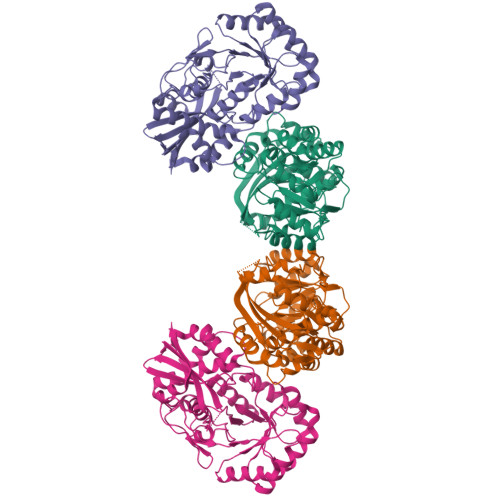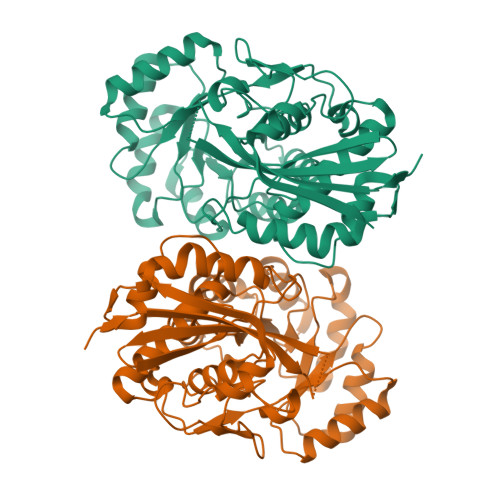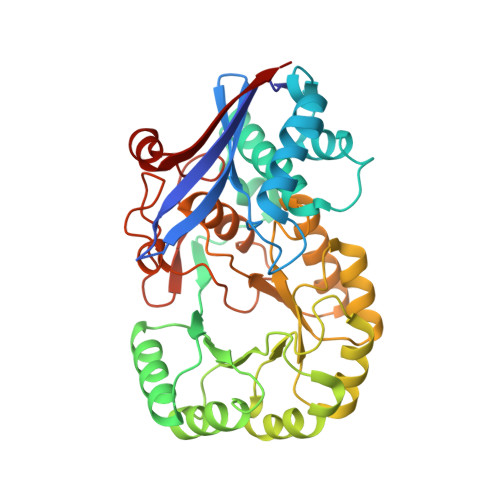Structural basis for catalytic racemization and substrate specificity of an N-acylamino acid racemase homologue from Deinococcus radiodurans
Wang, W.-C., Chiu, W.-C., Hsu, S.-K., Wu, C.-L., Chen, C.-Y., Liu, J.-S., Hsu, W.-H.(2004) J Mol Biology 342: 155-169
- PubMed: 15313614
- DOI: https://doi.org/10.1016/j.jmb.2004.07.023
- Primary Citation of Related Structures:
1R0M, 1XPY, 1XS2 - PubMed Abstract:
N-acylamino acid racemase (NAAAR) catalyzes the racemization of N-acylamino acids and can be used in concert with an aminoacylase to produce enantiopure alpha-amino acids, a process that has potential industrial applications. Here we have cloned and characterized an NAAAR homologue from a radiation-resistant ancient bacterium, Deinococcus radiodurans. The expressed NAAAR racemized various substrates at an optimal temperature of 60 degrees C and had Km values of 24.8 mM and 12.3 mM for N-acetyl-D-methionine and N-acetyl-L-methionine, respectively. The crystal structure of NAAAR was solved to 1.3 A resolution using multiwavelength anomalous dispersion (MAD) methods. The structure consists of a homooctamer in which each subunit has an architecture characteristic of enolases with a capping domain and a (beta/alpha)7 beta barrel domain. The NAAAR.Mg2+ and NAAAR.N-acetyl-L-glutamine.Mg2+ structures were also determined, allowing us to define the Lys170-Asp195-Glu220-Asp245-Lys269 framework for catalyzing 1,1-proton exchange of N-acylamino acids. Four subsites enclosing the substrate are identified: catalytic site, metal-binding site, side-chain-binding region, and a flexible lid region. The high conservation of catalytic and metal-binding sites in different enolases reflects the essentiality of a common catalytic platform, allowing these enzymes to robustly abstract alpha-protons of various carboxylate substrates efficiently. The other subsites involved in substrate recognition are less conserved, suggesting that divergent evolution has led to functionally distinct enzymes.
Organizational Affiliation:
Institute of Molecular and Cellular Biology, National Tsing Hua University, Hsinchu 300, Taiwan, ROC. wcwang@life.nthu.edu.tw



















